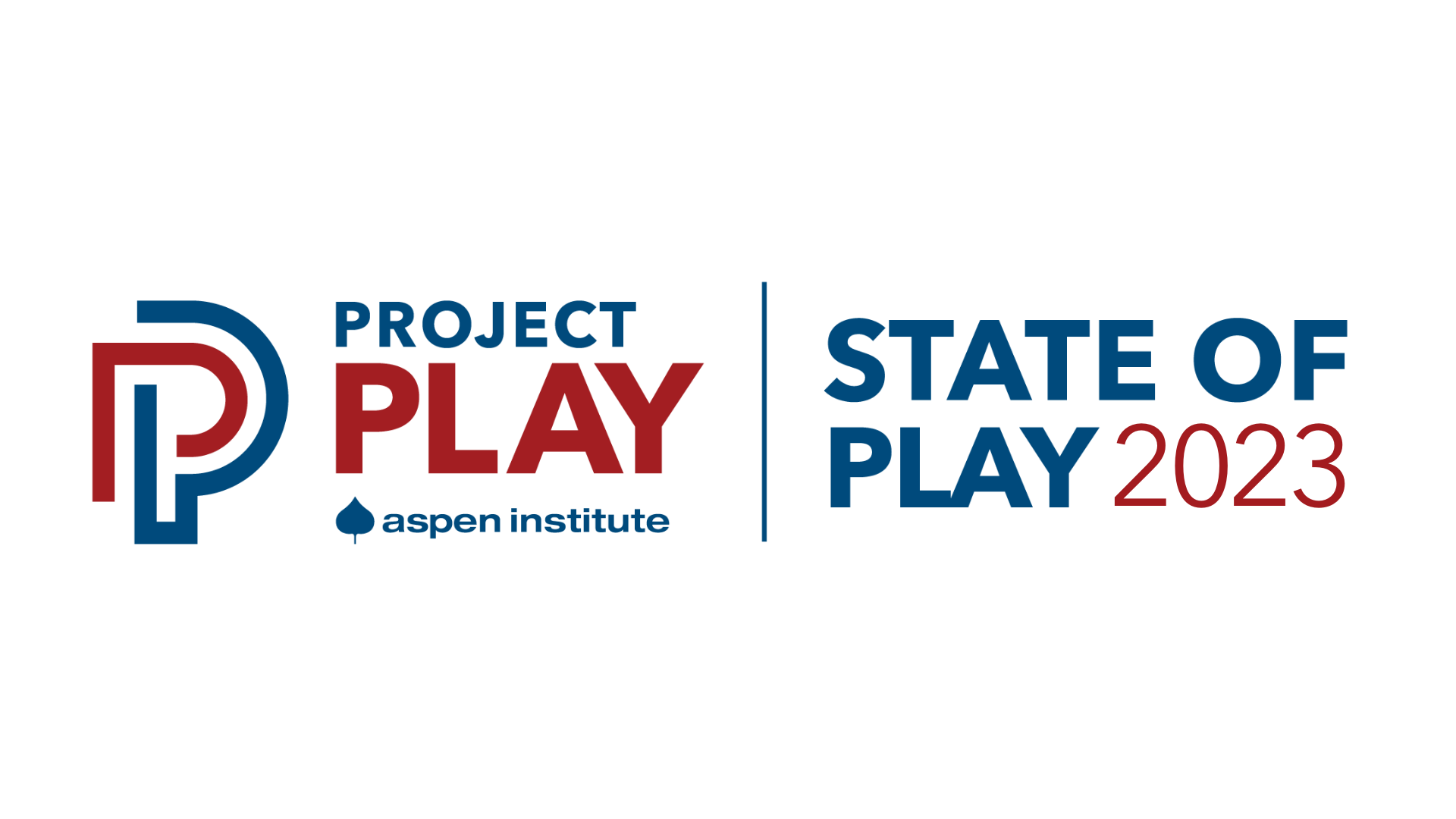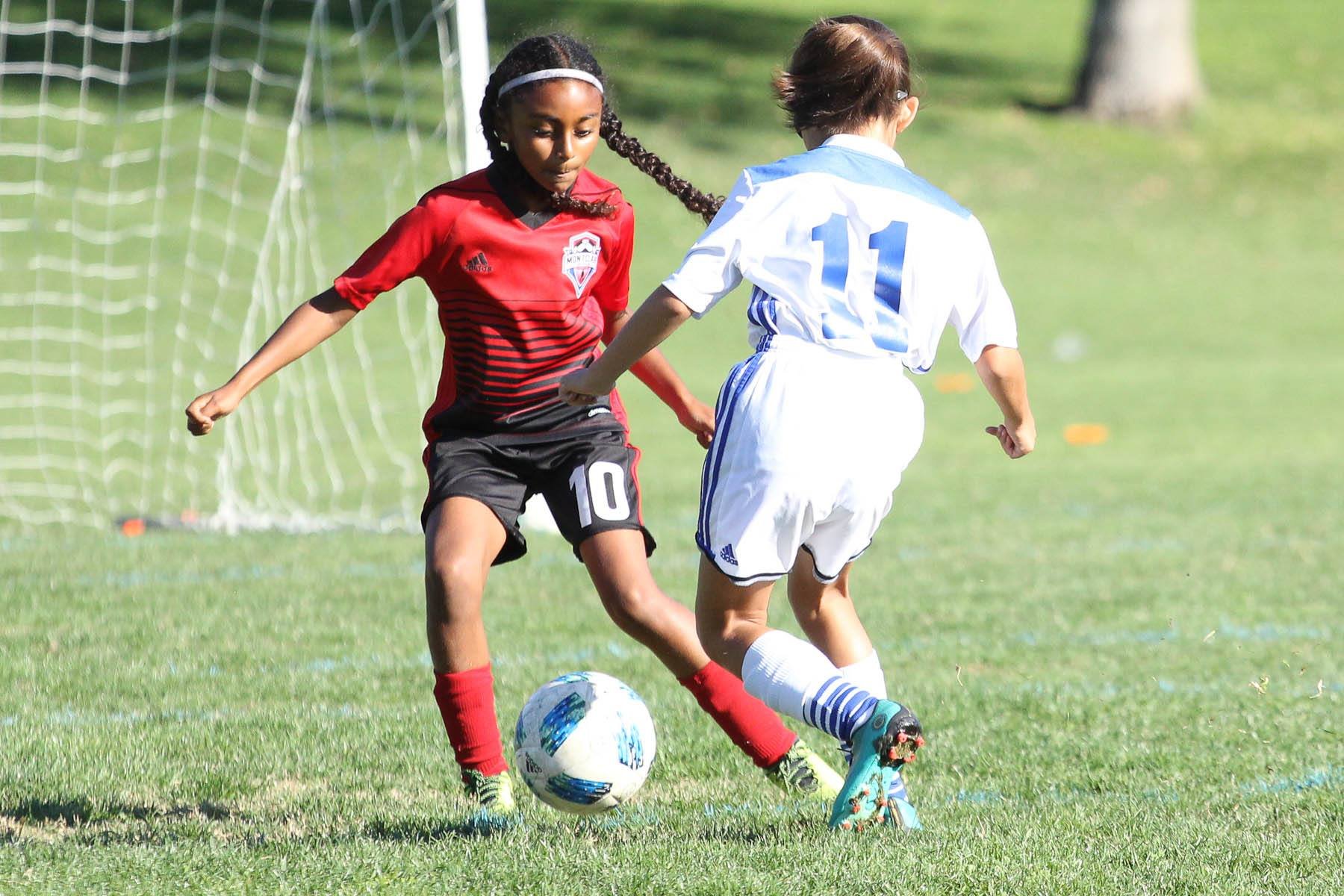Our Annual Report on Trends in Youth Sports and PROJECT PLAY’S CONTRIBUTIONS TO THE FIELD
Nearly four years removed from the start of the COVID-19 pandemic, children are playing team sports less often even as progress is being made in filling gaps with girls and low-income populations. Those are high-level takeaways from our State of Play 2023 report, the Aspen Institute’s annual analysis of national trends in the delivery of sport for young people.
Between 2019 and 2022, regular team sports participation for youth ages 6-17 declined 6% while total participation (playing a sport at least once in the past year) stayed flat. The good news: children ages 6-12 casually tried sports at a higher rate. Overall, kids are trying sports about as much as they did before COVID-19. They’re just not playing as frequently.
Many factors impact regular sports participation, which correlates with organized play. There’s not a one-size-fits-all explanation for why children may join a team or return the next year.
But this much became clear in the past year: Children see sports as a way to improve mental health, especially when it’s a good experience. An Aspen Institute survey of more than 3,000 youth in the Tacoma, Washington area for our report, State of Play Tacoma-Pierce County, found as much among young people struggling with anxiety, depression and even suicidal thoughts:
“I would recommend doing sports at school to anyone! I do cross country and track and they’ve really helped me manage my anxiety. While it is challenging at times, when I think about how far I’ve come as an athlete and as a person, I’m really proud of myself.”
“I tried out for soccer for the first time because a friend convinced me it would help improve my mental health and confidence. I joined and got cut a few days later. But while I had tryouts, I would stop overthinking and worrying about everything. Once I got cut, I started going back to my old habits.I cried a lot.”
“I really want to play but I feel too nervous like I am going to be judged and am not good enough.”
“Sports make me feel better and I can sleep easier at night.”
More attention is being paid to the role that positive sports experiences can have on a child’s mental health, given that 42% of high school students today say they have experienced persistent feelings of sadness or hopelessness. That’s up from 28% a decade ago. While all teens report increased mental health challenges, girls fare worse than boys.
Other key trends and developments that emerged in 2023:
Sports participation is increasing for girls and declining for boys. Boys (40%) still regularly played sports at a higher rate than girls (35%) in 2022, according to national data from the Sports & Fitness Industry Association (SFIA). But the two genders are going in opposite directions. A decade ago, half of boys regularly played sports. The participation rate for girls is the highest since 2013.
Massachusetts and Minnesota lead U.S. states for sports participation rates. The federal government set a national goal for youth sports participation to reach 63% by 2030. Even during the heart of COVID-19, Massachusetts and Minnesota reached that number, according to the 2020-21 National Survey of Children’s Health. The national average was 51%. Note: The rate reflected in the government survey is higher than most SFIA data cited in this report because parents are asked if their child played on a team or took a sport lesson, whereas SFIA asks about regular participation in sports.
Efforts to provide greater access to low-income children may be working. Youth ages 6-12 from the lowest-income households increased regular sports participation for the fourth straight year. However, the rate declined for the fourth straight year among the highest-income youth. The gap remains significant – 25% participation for kids in homes earning under $25,000 vs. 39% among those earning $100,000 or more.
Many non-scholastic organizations lack basic safety policies. Among the findings from a survey by insurance provider Players Health of 685 recreational and travel sports organizations: 56% lack a policy governing one-on-one interactions between adults and minors and 47% do not require coaches and staff take abuse prevention training.
Serious knee injury rates are increasing in high school sports. Tears of the anterior cruciate ligament (ACL), which can send students into adulthood with impaired mobility, increased 12% between 2007-08 and 2021-22, according to new research by Hospital for Special Surgery and the Datalys Center. Girls soccer had the highest rates of ACL injury, followed by tackle football, girls basketball, and girls lacrosse.
Private equity is flowing billions of dollars into the market. The development is causing many youth sports club programs and other providers to consolidate, increasing efficiencies within the system but also reducing program options for families. The smaller organizations are getting smaller, and the bigger organizations are getting bigger.
State governments are paying more attention. Maryland and Massachusetts invested in programs that use sports as a tool for youth development in disadvantaged communities. Massachusetts is again studying how to regulate youth sports. New York began distributing mobile sports betting revenue to youth sports providers, although accessing funds at scale did not go as originally intended.
Americans say youth sports deserves public funding. More than half of U.S. adults (52%) say such support for sports would have the most impact at the youth and school sports levels, according to a new survey by SurveyUSA commissioned by the Commission on the State of United States Olympics & Paralympics. Far fewer adults identified the Olympics (14%), Paralympic Games (7%), college sports (6%) and professional leagues (5%) as deserving of taxpayer support.
The findings in State of Play 2023 are drawn from many sources, including SFIA’s youth sports participation data from 2022 (the most recent year available). Findings also came from interviews with leaders in the youth sports space, additional research, and media accounts. Beyond insights and data in State of Play 2023, authored by the Aspen Institute’s Jon Solomon and Tom Farrey, we offer updates on the contributions made by Project Play over the past year to improve the disjointed sport ecosystem that engages youth. We hope you find this report useful in creating access to quality sports and other physical activity opportunities for youth at a time when children are telling us it’s sorely needed.
Thank you to our partner, Hospital for Special Surgery (HSS), sponsor of the State of Play 2023 report.




